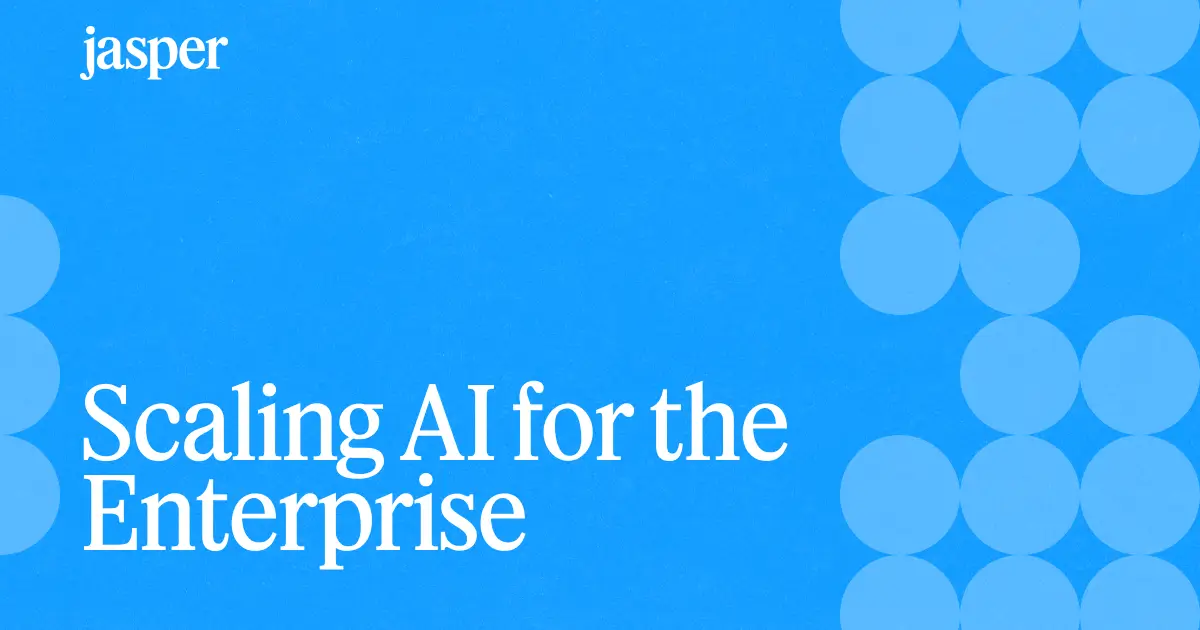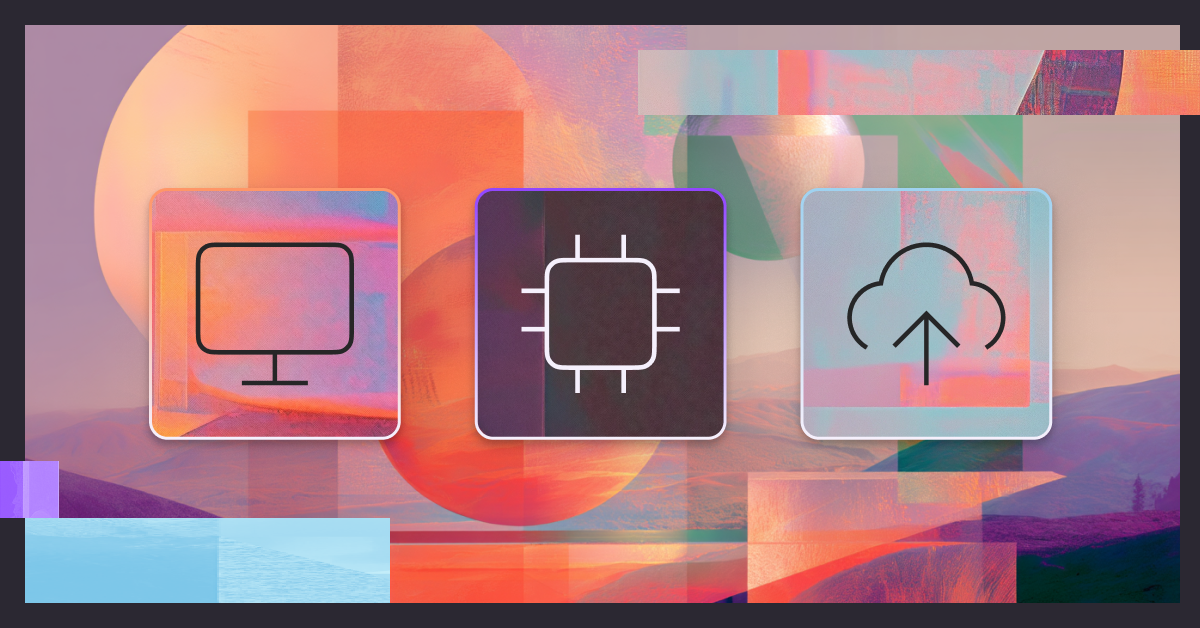How to Write a Headline: Helpful Tips, Formulas and Examples
Wondering how the best headlines get written? We’re sharing our top tips and 10 headline formulas to help you craft a viral masterpiece.
.jpeg)
Generating great titles and headlines are a crucial piece of the content puzzle. To your reader, your headline is the first impression, your way of reaching out to them through the noise of other search engine results or social media posts.
If you want a guaranteed way to come up with effective headlines every single time, then you’re in the right place. We’ll examine how to write a headline that commands readers’ attention, and look at some headline formulas and examples you can emulate.
What makes a headline go viral?
Keep these six points in mind if you want to create a headline that stops readers in their tracks.
1. Include numbers
Look at this image of the SERP for the query “important marketing metrics.”

Which result would you click on, especially if you trusted all three authority sites equally? Probably G2’s. Since it promises way more info than the other two results, it would give a more complete, informative answer to the query. At least, in theory.
But the theory is what makes the difference here. Headlines or, in this case, title tags with numbers are more attention-grabbing because they help readers to quantify the value they’ll be getting from your content.
So, if you can include a figure or two while writing headlines, do it.
For example, which of these two would you rather read?
- "Important Marketing Metrics You Need to Know"
- "15 Crucial Marketing Metrics That Will Transform Your Business"
The second headline is more enticing because it gives a specific number and promise of potentially transforming your business.
But it's not just about grabbing attention - including numbers can also improve the structure and organization of your content. They provide a clear framework for the reader, helping them to understand and retain information more easily.
2. Share something new
Curiosity may have killed the cat, but it sure will get you clicks. A good headline should tease new information just enough to convince readers that they want to know more.
For example, headlines like, “The One Tool That Will Get You to Inbox Zero” are clickable because they heighten curiosity. Even if you’ve tried a dozen methods already, if you’re overwhelmed with emails, you’ll want to click this. If for nothing else, to see what they have to say.
Remember, though, to avoid clickbait. Nothing destroys trust faster than clicking a link and not seeing the information promised.
3. Teach something
The internet is a learning hub like no other and most people come to Google first with any life questions they have. So if your headline shows the reader that they’ll be getting in-depth guidance about a particular topic, they’ll be more willing to click.
Phrases like “Ultimate Guide” and “Comprehensive Guide” work for readers looking for a crash course on a new subject.
But because this headline style is overused, be sure to include additional qualifiers like who your guide’s audience is or why your guide is different from other “ultimate” guides. For example, instead of “Your Ultimate Guide to Skateboarding,” try “A 10-Minute Guide to Skateboarding for Beginners.”
This headline specifies a target audience and time frame, making it more likely to garner clicks and reader engagement.
4. Ask thought-provoking questions
Questions have a way of luring readers in, especially if they’ve had those same questions on their minds. These questions make readers feel seen and even before they click, they feel a sense of kinship with the writer.
Other times, questions evoke curiosity or skepticism — both of which can lead a reader to your article.
For example, “Are You Making These Common Grammar Mistakes?” can either pique the interest of someone who’s unsure about their writing skills or challenge someone who believes they have perfect grammar.
Just make sure your question is relevant to your content and not just a random attention-grabber. Readers want to feel that clicking on your headline will provide them with useful information related to the question asked.
5. Add a personal touch
Humans love stories and people tend to trust stories from the horse’s mouth. So if you’ve got the “receipts” to back up your talk and you’re willing to be vulnerable in your piece of content, let your headline show it.
From posts about how people hit a certain earnings goal to articles about weight loss using a particular fitness regimen, readers love the personal touch. Don’t forget to also share your missteps — nothing says human more than mistakes and imperfections.
Make sure to find a balance between personal and professional, as you don't want to come off as unprofessional or unreliable. But adding a personal touch can make your headline more relatable and appealing to readers.
Incorporating a personal touch into a blog headline has the power to significantly increase reader engagement and interest. This approach makes the content feel more relatable and tailored to the reader's own experiences or desires, creating an immediate connection.
Headlines that suggest a personal story or insight invites readers into a conversation, rather than just presenting them with information. It taps into the emotional aspect of decision-making, encouraging clicks through curiosity or empathy. Personal headlines stand out in a sea of generic content, making them more memorable and shareable, thus amplifying the reach and impact of the blog.
6. Power words
No headline is complete without at least one power word. Power words make readers stop and take notice of your headline. They’re often unique, punchy, and likely to incite an emotional response.
Adjectives like brilliant, powerful, frustrating, and impressive are all power words. Did you feel something after reading each of those words? That’s the power.
Power words can also create a sense of urgency and scarcity, making readers feel like they need to act fast. Examples include limited, exclusive, and last chance. These words are effective because they tap into our fear of missing out and desire for something special or rare.
They can also be used to evoke a specific emotion in your readers. For example, if you want your audience to feel motivated, you can use words like inspired, driven, and be straightforward and just say motivated in your headline. On the other hand, if you want to elicit a sense of fear or urgency, you can use words like danger, warning, and urgent.
It's important to note that power words should be used sparingly and strategically. If every sentence in your content is packed with power words, they quickly lose their impact and become overwhelming for readers. Instead, choose a few key power words to use throughout your content and make sure they are relevant to the message you are trying to convey.
How to write a headline
We’ve covered some of the best practices for writing attention-grabbing headlines and, up next, we’ll share some foolproof formulas you can try. But, first, let’s go over how to write headlines.
Sum up the topic.
Without being misleading, summarize the main point of your content and, more importantly, what your audience will gain from checking it out. You have to have a clear, condensed description in mind first before you can write a concise but complete headline for your audience. This will help you stay on track and ensure that your headline accurately represents the content of your article.
Match the tone of voice.
What tone does your content or copy have? Is it friendly or casual? Persuasive or professional? Whatever description you land on, your headline should have the same tone so that readers aren’t thrown off by huge differences between the headline and body of your piece.
If you really want to build consistency across all pieces of content, we recommend using the Brand Voice feature of Jasper. This allows you to create and save your desired tone and style by scanning an uploaded document, copy and pasted text or by scanning your entire website.
Here’s an example of the Brand Voice feature in action where we scanned the entire Jasper blog:

Try several headlines.
Using the best practices we mentioned above, whenever you can, create at least 10 options per piece. That way, you can get past the first few basic ideas to the more creative, eye-catching, and compelling versions. (Alternatively, you can let Jasper do this heavy lifting for you, which we’ll walk you through later.)
Test your headlines.
A great tool for this is CoSchedule Headline Studio, which scores headlines based on a bunch of criteria such as length, sentiment, use of power words, and even SEO potential. Pop the options you’re considering into Headline Studio to compare and contrast their strengths and weaknesses, and choose from headlines with green scores above 70+.
Avoid "clickbait."
Your headlines should always accurately represent the content of your article. While it's tempting to use sensational language or promises to entice readers, this can lead to disappointment and distrust if the content doesn't deliver on those claims. Be honest and authentic in your headline and let your high-quality content speak for itself.
10 headline formulas you can use for crafting catchy headlines
If you’re looking for interesting ways to write your headline, try one of these 10 easy formulas for creating headlines for any kind of article.
1. How to do anything
The how-to headline works because the audience is often desperate for help. Still, it’s important to elevate your how-to headline because there’s usually stiff competition on search engine result pages (SERPs).
You can help your headline stand out by being more specific, highlighting how fast your article helps, who your target audience is, or what shortcuts your process helps the user through.
Here are three examples with our specific benefits bolded:
- How to Start a Blog in 3 Simple Steps (Step by Step Guide)
- How to Keep Your Kids Occupied Without More Screen Time
- How to Lose 20 Pounds in 3 Weeks Without Exercising
2. Common mistake
No one likes to be caught slipping, so ears perk up when you highlight a potential error that readers are at risk of (or already) making. The three headline ideas below are for the same (fictional) post about mistakes first-time business owners make:
- 8 Common Mistakes New Business Owners Make
- Still Doing Your Numbers on a Spreadsheet? Here’s What You May Be Missing
- Don’t Make These 8 Common Startup Founder Mistakes
3. This vs. that (comparisons)
Readers are always looking for posts comparing products or services. However, this template can also work to compare non-tangible ideas like approaches to business, lifestyle preferences, and the like. And it doesn’t always have to be a boring “This vs. That” presentation.
Here are some examples:
- Why Content Marketing Works Better Than Paid Advertising
- Content Marketing vs Paid Advertising: Which Should You Choose?
- Are Paid Ads Worth It? Or Should You Stick to Content Marketing?
4. All you need to know
This is the Ultimate Guide 2.0. Having the phrase “need to know” in your headline tells your readers that you’re covering all their bases. Try one of the following formats:
- Everything You Need to Know About Starting an Online Business
- 10 Things You Need to Know About Your First Pregnancy
- Your Ultimate Guide to Moving to New York
5. The probing question
This headline asks readers questions they may or may not have answers to — questions the article promises to answer. Here are some examples to fill in the blanks:
- Should You Still Be Doing ____
- Is It Safe to Do ____
- Is ____ Costing You ____?
6. The sage advice
There’s no better formula to share a personal story than this one. Use one of the templates below to share your personal successes or horror stories:
- How to Survive Your First ____
- Behind the Scenes of My First ____
- What You Should Know Before Your First ____
7. Why? Why? Why?
This headline formula uses the word “why” without actually asking a question. Although most readers want to know how to do things, many of us also simply want to know why some things work the way they do. Here are some (fictional) examples:
- Why You Should Be Using LinkedIn to Promote Your Business
- Why You Need to Use Fewer Plugins on Your WordPress Sites
- Here’s Why Your iPhone Keeps Dying at 20% Battery
8. Negative lure
This template works for pretty much the same reason as the common mistakes one: people like to be in the know. Unveil your audience’s common misconceptions with these formulas:
- Debunked! 8 Myths About ____
- 8 Lies You Probably Believe About ____
- 8 Common Misconceptions About _____
9. Basic listicle
The basic list post is a classic like the how-to article. To make your headline for these posts more effective, pack on the power words. For example:
- 10 Important Reasons to Declutter Your Home
- 20 Easy Ways to Save $1000 in a Year
- 30 Life-Changing Books to Read Before You Die
10. Two for one
Using a colon, you can combine two headline styles for maximum impact. Here’s how it works:
- How to Write a Book: 9 Steps to Ditching Writer’s Block
- Content Marketing vs Paid Ads: A Case Study
- 10 Quick SEO Tips: Why You Should Be Using SEO for Your Business
Best headline examples to copy (with stats)
Don’t take our word for it, see what real-life viral headlines are made of. We’ve dug out five headlines that fulfill our criteria and done some research to see how they fared with social shares, backlinks, and overall traffic.
1. Sumo: 401+ Ridiculously Useful Power Words To Increase Conversions
The headline for Sumo’s power word post is eye-grabbing because of that enormous number! Every reader is going to want to see all those power words, if only to satisfy their curiosity. Ahrefs backlink tool shows that the post has a whopping 1800 backlinks to its name, showing how widely read and valuable it is.

2. Shopify: How to Start an Online T-Shirt Business: Everything You Need to Know
This Shopify headline uses a how-to and “all you need to know” formula in one — and it works! In the last year since it’s been published, the post has had over 800 social media shares, according to Shareaholic.

3. Hubspot: Do You Really Need That Exclamation Point? [Flowchart]
What a pointed question! This short post has an intriguing question as its headline and proceeds to answer using a flowchart. Ahrefs reports that the post has been linked back to over 350 times.

4. Groove: How Zapier Went From Zero to 600,000+ Users in Just Three Years

This Groove HQ post shares sage advice with specific details in its headline. It’s no wonder that the post has had over 1000 shares since it was published.
5. Nerd Fitness: Fat Shaming vs Body Acceptance: Is it okay to be fat?
Another two for one headline style, this one touches on a sensitive topic and pits two ideas against each other. It ends with a probing question that might make some readers uncomfortable. It seems to resonate with readers as it’s been shared over 275 times, according to Shareaholic.

How headline generators help you craft the perfect headline
Even with all the formulas in hand, writing the perfect headline is no easy task. If you have to think up multiple headline options every day, you may be in need of a headline generator. These tools implement some of the formula types discussed in this article.
However, if you want to go beyond formulaic options and gain a sidekick that actually thinks and generates unique content, try AI writing assistant, Jasper. Jasper has over 52 writing templates, at least three of which are designed to craft intriguing headlines: The Perfect Headline, Facebook Ad Headline, and Google Ad Headline templates.
Jasper also has templates for writing email subject lines and website subheadings — all forms of headlines that can be challenging to write.
Here’s the Perfect Headline template at work, in this case, to create some blog post headlines:

Notice how it automatically uses several of our recommended headline formulas such as ‘How to Do Anything’ and ‘Sage Advice’ with little to no effort on your part? That’s the beauty of using Jasper.
Ready to get some help with your headlines? Sign up for Jasper to start writing viral headlines right now. And, if you need some more help understanding the way the AI works, check out Jasper Jumpstart.
More of the latest & greatest

Scaling AI for the Enterprise: How Marketing Leaders Drive Impact
High-performing marketing teams are scaling AI with structure and strategy. Learn how CMOs can lead the way to drive organization-wide impact.
July 1, 2025
|
Megan Dubin

Reflections from Cannes: Why Brand and People Still Matter Most in the Era of AI
At Cannes Lions 2025, one truth stood out: brand, trust, and authenticity are making a powerful comeback.
June 24, 2025
|
Loreal Lynch

Interactive Tool: Benchmark Your AI in Marketing Strategy
Discover your marketing team's AI maturity. Benchmark your strategy, compare with peers, and uncover gaps with an interactive tool.
June 17, 2025
|
Megan Dubin







